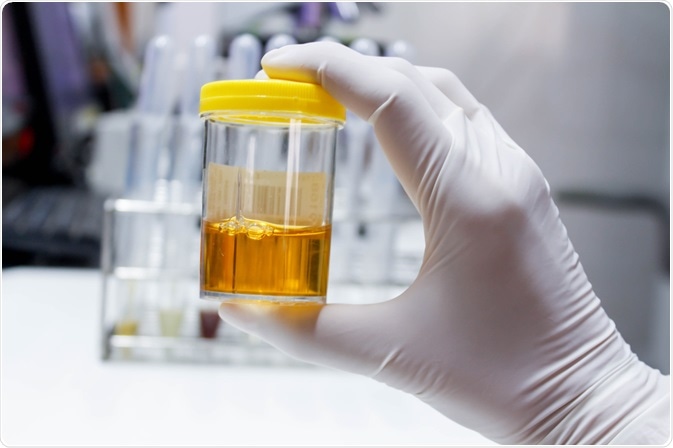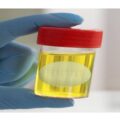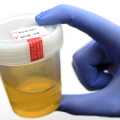According to Mayo Clinic, prescription drug abuse is the use of a prescription medication in a way not intended by the prescribing doctor. Prescription drug abuse or problematic use includes everything from taking a friend’s prescription painkiller for your backache to snorting or injecting ground-up pills to get high. Drug abuse may become ongoing and compulsive, despite the negative consequences.
Urine drug test, also known as a urine drug screen or a UDS, is a painless test. It analyzes your urine for the presence of certain illegal drugs and prescription medications.
A urine drug test can help a doctor detect potential substance abuse problems. After a drug test identifies drugs you may be misusing, doctors can help you start a treatment plan. Taking urine drug tests throughout substance abuse treatment helps to ensure that the plan is working and that you’re no longer taking drugs.
There are several scenarios where a urine drug test might be necessary. For example, your primary care doctor may order this test if they suspect you have a problem with drugs or alcohol. An emergency room doctor may also request this test if you’re confused or your behavior seems strange or dangerous.
Many employers require potential employees to take a urine drug test before they can be hired. One benefit of the urine drug screen is that it can keep people with drug problems out of jobs that require the ability to be alert and focused. For instance, an air traffic controller or truck driver who uses drugs could put the safety of many people at risk. Testing may also lower the risk of on-the-job accidents.
Drug and alcohol rehabilitation centers test residents on a regular basis. This helps ensure that people receiving treatment for drug or alcohol abuse stay sober. If you’re on probation or parole for a drug- or alcohol-related offense, the officer in charge of your case may request random drug tests to verify your sobriety.
Tramadol Abuse
Tramadol is considered an opioid narcotic drug in the same category as drugs like morphine, codeine, and hydrocodone. Opioid drugs act on opioid receptors in the brain, not only blocking pain, but also increasing pleasure and producing a mellow and euphoric “high” when abused. Heart rate, blood pressure, body temperature, and respiration rates all slow down, easing stress and producing relaxation. Opioid drugs are some of the most abused drugs in the country, potentially due to these desirable effects when taken recreationally.
Tramadol acts on opioid receptors and increases the levels of dopamine present in the brain like other opioids, but it also inhibits norepinephrine and serotonin from being reabsorbed. This action is similar to the way many selective serotonin-norepinephrine reuptake inhibitor (SNRI) antidepressant medications work on the brain, the journal Experimental and Clinical Psychopharmacology reports. This method of action may differ from traditional opioids, having both analgesic and antidepressant effects simultaneously.
The effects of tramadol may be intensified when its extended-release formations are altered (e.g., crushed to be snorted, injected, or smoked; or chewed and swallowed), and the entire dosage is sent into the bloodstream at once instead of slowly over a period of time. This can increase the risk for an overdose and may cause nausea, stomach cramps, dizziness, and drowsiness. In general, tramadol can cause a high that makes people feel relaxed, elevates moods, dulls pain, and reduces anxiety when it is used for nonmedical purposes.
How Long Does Tramadol Stay In Your System
There are different types of drug tests that are used depending on the goal of the test. Urine testing is the most common because of its ease, affordability, and fast results. It is also the only testing method approved for federally-mandated testing. Urine testing can detect if a substance has been used in the past few days for most drugs.
According to Drugs.com, tramadol is eliminated from your system within roughly 2 days of taking the drug, but this does not mean that it can no longer be detected by certain drug tests. The half-life of tramadol is around 6-8 hours, meaning that 6-8 hours after taking the drug, the concentration of tramadol in your blood has been reduced by half.
In general, tramadol is can be detected in your urine for 1 to 4 days after your last use. Most drugs are eliminated from the body after four or five half-lives. For tramadol, this process could take somewhere between 20 to 40 hours — or a maximum of almost two days at which point you will no longer feel the effects of the drug. SEE: How to Spot Fake Tramadol Pills






